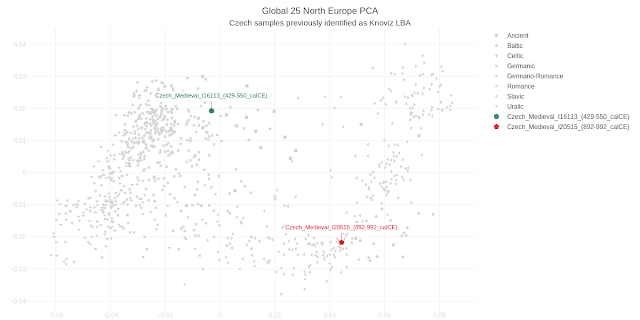merged fastq files -> bwa-aln -> mpileup -> pileupCaller -> DIYDodecad
| Archaeological site | ID | Sample no. | Sample no. that passed selection | Dating |
|---|
| Kowalewko | KO | 58 | 48 (11 deep seq.)
| 100–300 AD |
| Masłomęcz | MZ | 27 | 24 | 200–400 AD |
 |
| Ancient DNA from the Wielbark culture (Kowalewko, deep seq., selected samples) - Eurogenes K36 similarity map |
 |
| Ancient DNA from the Wielbark culture (Kowalewko, shallow seq., all samples) - Eurogenes K36 similarity map |
 |
| Ancient DNA from the Wielbark culture (Masłomęcz, shallow seq., all samples) - Eurogenes K36 similarity map |






Comments
https://anthrogenica.com/showthread.php?23595-New-Samples-from-Migration-Era-and-Early-Medieval-Moravia&p=768440&viewfull=1#post768440
Kow8, 10 and 6 are essentially Slavic.
You need to be more careful with such statements. Usually PCAs have more than 2 dimensions.
I wouldn't dare to say that they're essentially Slavic. But at the same time I'm not convinced about their "Scandinavianess". In WE PCA they tend to be closest to CWC N47 and N49. We need to wait for better sequences to sort this out.